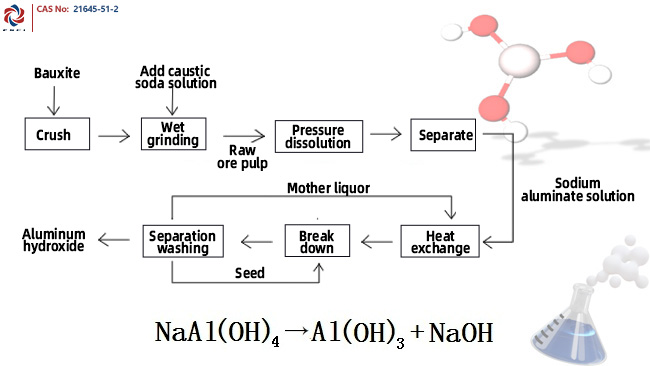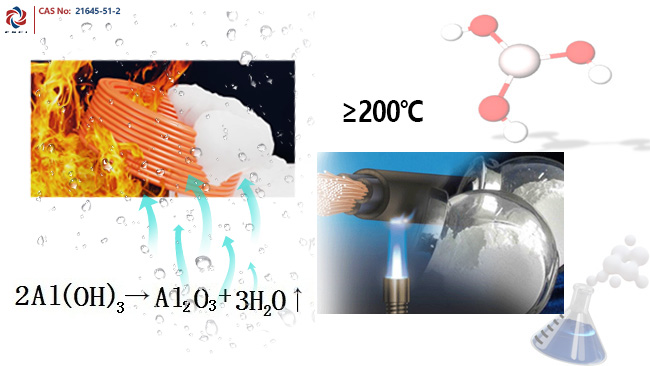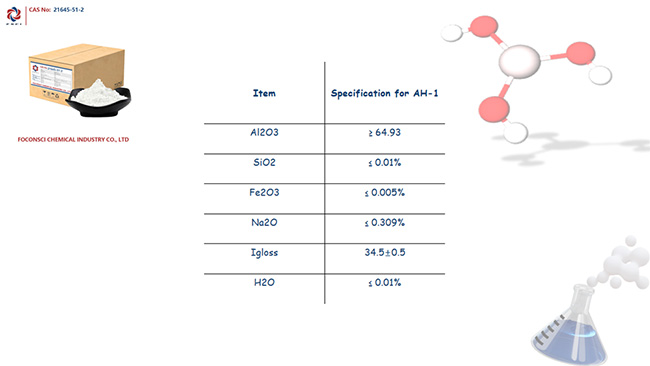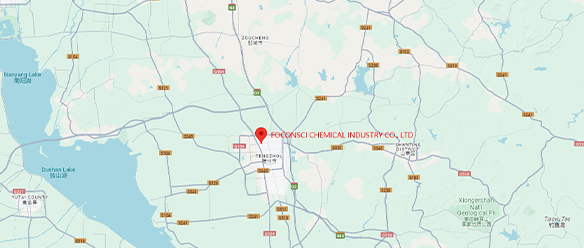Aluminum Hydroxide: Safe and Efficient Solution for Industrial Use
Aluminum hydroxide (CAS 21645-51-2), also known as hydrated alumina, is an important chemical compound widely used across various industries due to its unique properties. It has the chemical formula Al(OH)₃ and is derived from bauxite, an ore rich in aluminum. This compound plays a crucial role in industries such as flame retardants, water treatment, and pharmaceuticals. In this article, we’ll explore the production, properties, and applications of aluminum hydroxide in more detail.
Production of Aluminum Hydroxide
Aluminum hydroxide is primarily obtained via the Bayer process, which involves extracting alumina from bauxite. In this process, bauxite is treated with sodium hydroxide at high temperatures and pressures, dissolving the alumina into sodium aluminate. Aluminum hydroxide is then precipitated by adding water. This method ensures a high purity of the compound, suitable for use in diverse applications.

Key Properties of Aluminum Hydroxide
Aluminum hydroxide exhibits several characteristics that make it valuable in multiple industries:
- Chemical Structure: Al(OH)₃, featuring both basic and acidic properties, allows it to act as an amphoteric substance.
- Flame Retardancy: Aluminum hydroxide decomposes at temperatures above 200°C, releasing water in the form of steam, which cools the surrounding material and suppresses flames. This makes it a highly effective flame retardant.
- Non-Toxicity: The compound is considered safe for use in pharmaceuticals and food products, as it poses no harmful effects on health.
- Water Insolubility: Aluminum hydroxide is mostly insoluble in water but can dissolve in acidic or alkaline environments, enhancing its versatility.
Applications of Aluminum Hydroxide
1) Flame Retardant in Plastics and Polymers
One of the most significant uses of aluminum hydroxide is as a flame retardant in plastics, rubbers, and polymer materials. When exposed to high temperatures, aluminum hydroxide breaks down, releasing water vapor that helps to cool and suppress flames, thereby preventing the spread of fire. It’s often combined with other flame retardants like Antioxidant 168 (CAS 31570-04-4) to enhance its effectiveness in polymer formulations.

2) Filler in Construction Materials
Aluminum hydroxide is widely used as a filler material in the construction industry. It enhances the durability and fire resistance of building materials like PVC, flooring, and roofing products. Due to its non-toxicity and fire-suppressing properties, it is often a preferred additive.
3) Water Treatment
Aluminum hydroxide is an essential component in water treatment plants as a coagulant. When added to water, it binds to suspended particles and contaminants, forming larger clumps that are easily filtered out, resulting in clean, safe water for consumption.
4) Pharmaceutical Industry
In the pharmaceutical sector, aluminum hydroxide is employed as an antacid. It neutralizes excess stomach acid, offering relief from heartburn and indigestion. The compound also acts as a vaccine adjuvant, enhancing the immune response to vaccines.
5) Ceramics Industry
Due to its heat-resistant properties, aluminum hydroxide is a common raw material in ceramic production. It helps in forming ceramics that can withstand high temperatures, making it suitable for use in manufacturing tiles and high-performance industrial components.
Health and Safety Considerations

Aluminum hydroxide is generally recognized as safe when used in approved applications. However, workers in industrial settings should handle the compound with care, as exposure to fine dust may cause irritation to the eyes, skin, and respiratory system. Proper handling and storage precautions must be followed, such as using protective gear and ensuring adequate ventilation in work areas.
Environmental Impact
Aluminum hydroxide is considered environmentally benign due to its non-toxic and non-polluting nature. It does not contribute to harmful emissions when used as a flame retardant in polymers, unlike some other chemical alternatives. Moreover, its ability to aid in water purification highlights its positive environmental contributions.

Conclusion
Aluminum hydroxide (CAS 21645-51-2) is a versatile chemical that plays a critical role in multiple industries, from flame retardants to pharmaceuticals. Its non-toxic, flame-retardant, and amphoteric properties make it highly valuable in industrial and consumer applications. As demand for safer, more sustainable materials continues to grow, aluminum hydroxide’s importance in providing solutions to modern challenges is only set to increase.
Contact us
-
- Foconsci Chemical Industry Co., Ltd. is a modern chemical manufacturer that can provide customers with comprehensive technical support and solutions.
- Click here to learn more about chemical products.


 EN
EN
 AR
AR
 BG
BG
 HR
HR
 CS
CS
 DA
DA
 NL
NL
 FI
FI
 FR
FR
 DE
DE
 EL
EL
 HI
HI
 IT
IT
 JA
JA
 KO
KO
 NO
NO
 PL
PL
 PT
PT
 RO
RO
 RU
RU
 ES
ES
 SV
SV
 TL
TL
 IW
IW
 ID
ID
 LV
LV
 LT
LT
 SR
SR
 SK
SK
 VI
VI
 HU
HU
 TH
TH
 TR
TR
 GA
GA
 CY
CY
 KA
KA
 LA
LA
 MN
MN
 KK
KK
 LB
LB



